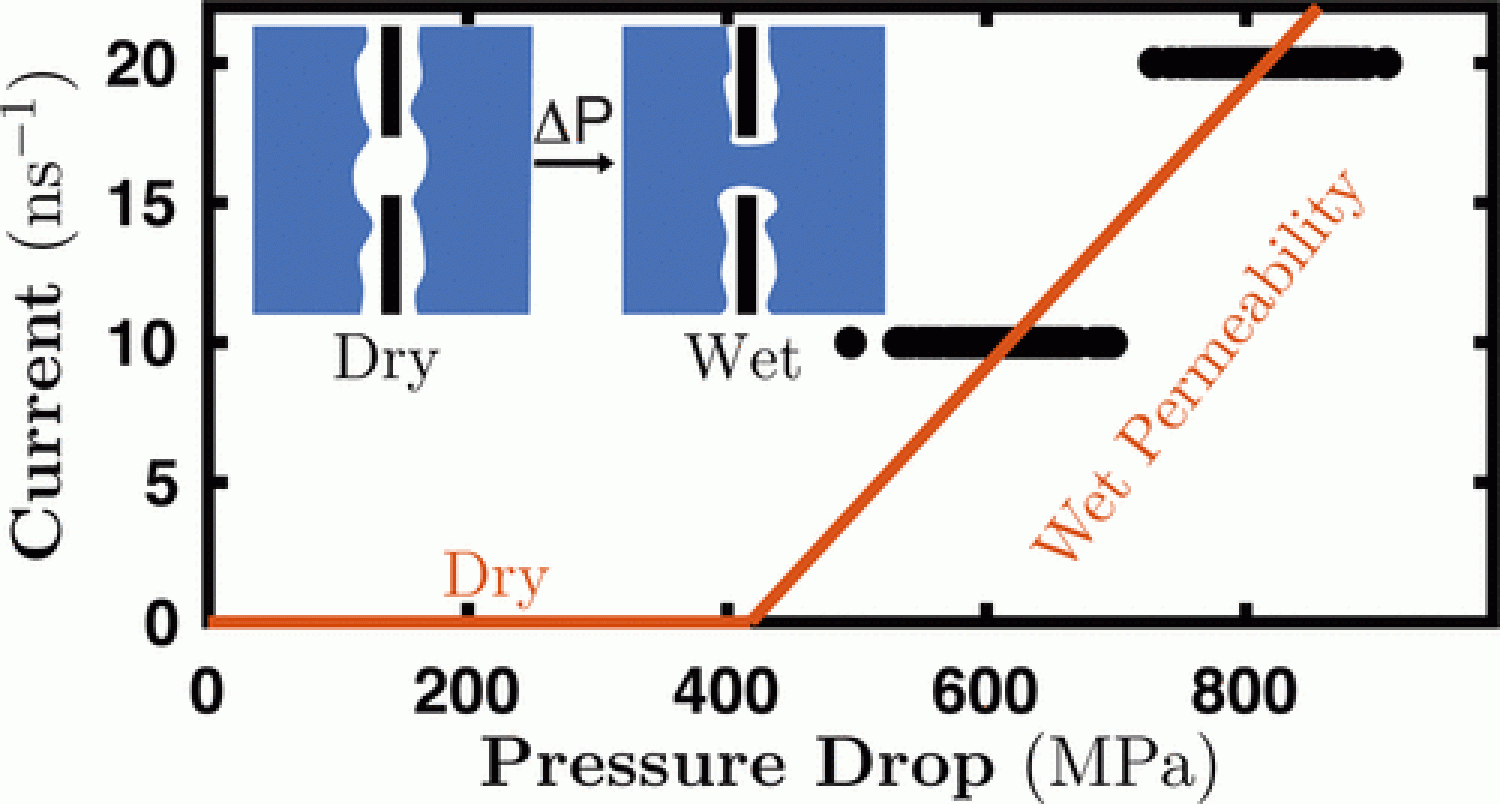Linear Response Theory for Water Transport Through Dry Nanopores

Porous two-dimensional crystals like graphene have the potential to revolutionize reverse-osmosis membrane technology. The permeability is a common figure of merit that describes the ease with which water flows through a membrane. For two-dimensional crystals, the permeability can be orders of magnitude higher than it is in conventional reverse-osmosis membranes. We apply our Gaussian Dynamics nonequilibrium molecular dynamics simulation method to very hydrophobic two-dimensional membranes and find that the current–pressure drop relationship becomes nonlinear. In this regime, the conventional permeability is an inadequate descriptor of the passage process, and the transport mechanism becomes a two-step one. The backing pressure first causes the pore to wet, and after it reaches a threshold pressure, water transport takes place from the wet state. We recover a simple description of the transport process by applying linear response theory with respect to the wet reference state rather than the dry one. A macroscopic thermodynamic argument supports our mechanistic description and predicts the wetting threshold pressure as a function of the contact angle.
Strong, S. E. and Eaves, J. D., Linear Response Theory for Water Transport Through Dry Nanopores. J. Phys. Chem. A 121, 5377 (2017)

